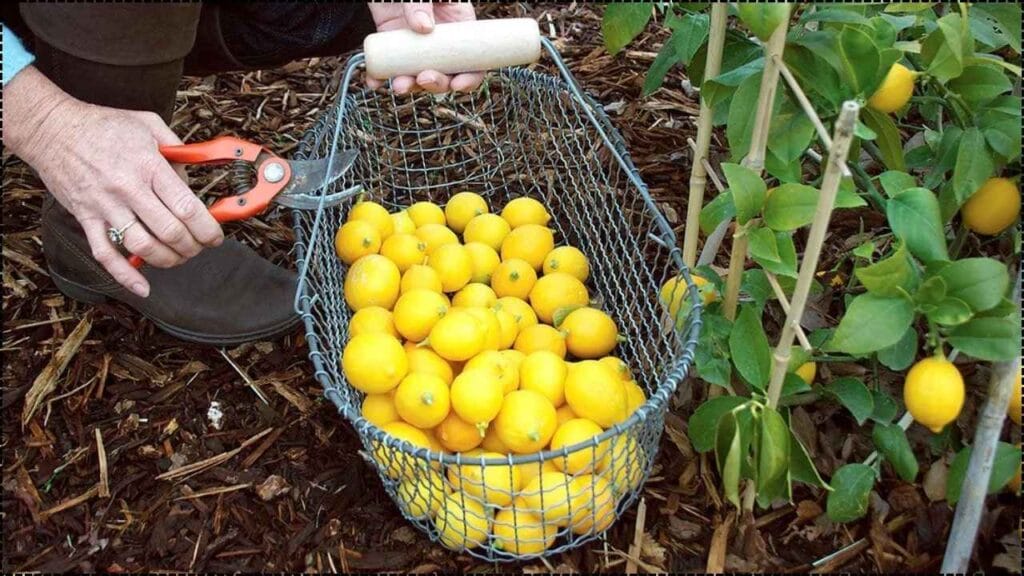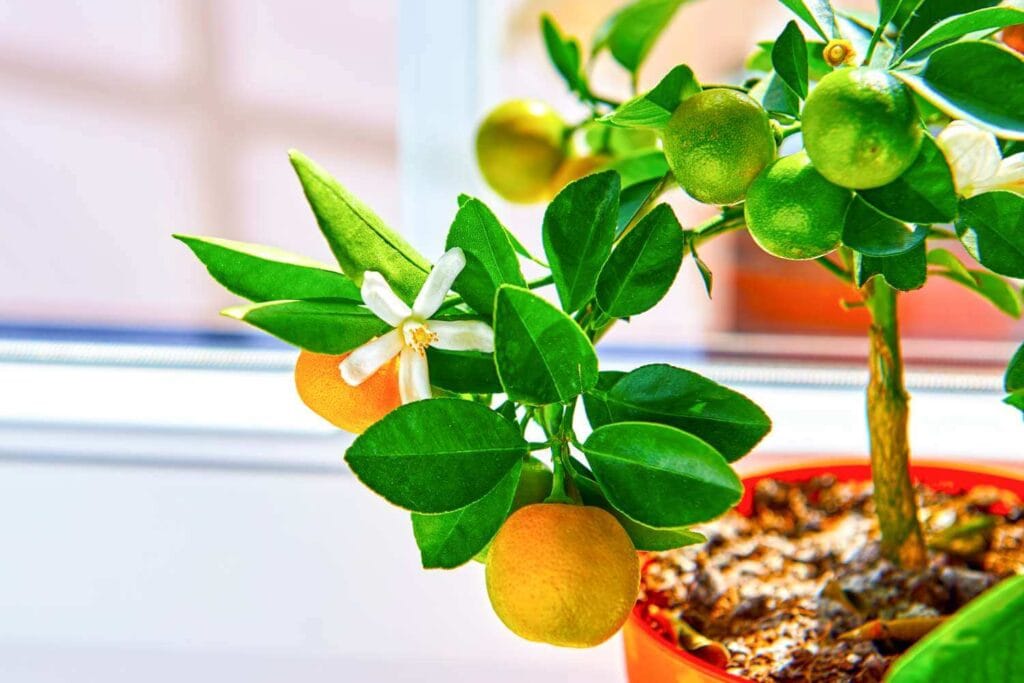Have you ever dreamed of gently plucking fresh, vibrant fruit from your own cozy home? Whether you’re nestled in a city apartment, a modest house, or a charming condo, growing lemons, apples, and figs indoors is not only beautifully possible—it’s delightfully simple with the right tools and a touch of loving know-how. Indoor fruit gardening is blossoming as a heartfelt trend, inviting everyone to savor homegrown produce without needing an outdoor garden.

With care, this guide shares easy tips, clever tricks, and wisdom from seasoned gardeners to help you nurture these fruits in containers, bringing joy, health, and a touch of nature’s kindness to your home.
Grow Lemons, Apples, and Figs Indoors
| Aspect | Details |
|---|---|
| Growing Lemons | Lemon trees need plenty of sunlight (at least 8 hours a day) and well-draining, acidic soil. Tip: Opt for a dwarf variety like Improved Meyer. |
| Growing Apples | Apple trees, especially columnar varieties, are great for small indoor spaces. Consider varieties like Spartan or Columnar Apples for easy care. |
| Growing Figs | Fig trees, like Little Miss Figgy, are perfect for container gardening. They need sunlight and a bit of patience as they take longer to fruit. |
| Time Commitment | Just 10-15 minutes of care per day—plus some love! Regular pruning, checking for pests, and occasional feeding are key. |
| Sustainability & Benefits | Growing your own fruit can save money, improve mental health, and promote sustainability. Plus, it adds some beautiful greenery to your space! |
Growing lemons, apples, and figs indoors is delightfully easier than you might imagine! With gentle care—plenty of warm sunlight, nurturing soil, and loving attention—you can savor fresh, homegrown fruit in even the coziest of spaces. Whether you’re yearning to add a touch of vibrant greenery to your home or craving the joy of fresh fruit year-round, container gardening offers a heartfelt, simple solution.
With kindness, this approach brings nature’s bounty to your doorstep, fostering wellness and connection in every nurturing moment. Take the time to select the right varieties, provide the necessary care, and soon you’ll be reaping the rewards of your efforts. Happy gardening!

Why Grow Fruit Indoors?
If you’ve been thinking about starting an indoor garden, you’re not alone. People are turning to container gardening for various reasons—whether it’s for a healthier lifestyle, saving money, or simply enjoying the beauty of nature indoors. Growing fruits like lemons, apples, and figs in containers allows you to experience the joys of gardening while making the most of your available space.
Benefits of Growing Fruit Indoors
- Fresh, Organic Produce: Indoor gardening provides easy access to fresh, pesticide-free fruit all year round.
- Eco-friendly and Sustainable: By growing your own fruits, you’re reducing your carbon footprint by limiting the need for store-bought produce that often comes with excessive packaging.
- Stress Relief: Gardening, even indoors, has been shown to reduce stress levels and boost mental health. The act of nurturing plants can help you feel more grounded and calm.
- Save Money: While growing indoor fruit trees requires some initial investment, over time, you’ll save money by harvesting your own fruit.
Grow Lemons, Apples, and Figs Indoors Grow Lemons Indoors
Lemon trees, particularly dwarf varieties like Improved Meyer, are perfect for container gardening. These trees thrive indoors as long as they receive the proper amount of sunlight and attention.
Sunlight Requirements
Lemon trees need full sunlight—at least 8 hours per day. If you don’t have a sunny spot in your home, you might want to consider investing in grow lights to supplement natural light. Place your lemon tree near a south-facing window if possible.
Container and Soil
Choose a container that is at least 12 inches in diameter and has good drainage. Lemons thrive in well-draining, acidic soil. You can use a citrus potting mix or mix regular potting soil with perlite to improve drainage.
Watering and Fertilization
Water the tree when the soil feels dry to the touch, but make sure the pot has drainage holes to prevent root rot. During the growing season, fertilize your tree every 6 to 8 weeks with a balanced, water-soluble fertilizer. During winter, reduce watering and feeding.
Pruning and Care
Lemon trees should be pruned regularly to remove dead or damaged branches and to encourage healthy growth. Keep an eye out for pests like aphids and scale insects, which can damage the leaves.
Grow Lemons, Apples, and Figs Indoors Grow Apples Indoors
Apple trees are also ideal for growing indoors, especially columnar varieties, which are compact and perfect for smaller spaces.
Sunlight and Space
Like lemon trees, apple trees need a lot of sunlight. At least 8 hours of direct sunlight is crucial. Columnar apple trees are great for indoor spaces because they grow vertically, taking up less room. If you’re tight on space, consider varieties like Spartan or Gala, which are smaller and easier to manage.
Soil and Containers
Choose a pot with drainage holes and use well-draining soil. Apple trees prefer slightly acidic soil, so opt for a soil mix that’s designed for fruit trees or a mixture of peat moss, perlite, and pine bark.
Watering and Fertilizing
Water when the top inch of soil is dry. Be careful not to overwater, as apple trees don’t like to have “wet feet.” Fertilize your apple tree with a balanced fertilizer every 6 to 8 weeks during the growing season.
Pollination
Apple trees typically need another tree for cross-pollination. If you only have space for one tree, you can try self-pollinating varieties or hand-pollinating flowers with a small brush.
Grow Lemons, Apples, and Figs Indoors Grow Figs Indoors
Fig trees, particularly Little Miss Figgy, are compact and perfect for container gardening. While they may take a little longer to bear fruit compared to other fruit trees, they’re well worth the wait.
Light and Temperature
Figs love full sunlight—at least 6 hours of direct sunlight a day. If you don’t have a bright spot in your home, you can use grow lights to supplement the natural light. Figs also need a moderate temperature of 65-75°F (18-24°C), so avoid placing them in areas where the temperature fluctuates drastically.
Soil and Containers
Figs prefer a well-draining potting mix. A mixture of peat moss, perlite, and potting soil is ideal for figs. Make sure your container has good drainage to prevent root rot.
Watering and Fertilizing
Water your fig tree thoroughly when the soil feels dry about 2 inches below the surface. Figs don’t like to sit in water, so make sure the pot has drainage. Fertilize the tree monthly during the growing season with a balanced fertilizer.
Maintenance
Figs don’t need heavy pruning, but you should remove dead branches and keep the tree’s shape neat. Check regularly for pests like mealybugs or spider mites.
Related Links
Cannabis Use Linked to Higher Health Risks — Check What New Study Reveals About Smoking and Edibles
Troubleshooting Common Problems in Indoor Fruit Gardening
Even seasoned gardeners face challenges when growing fruit indoors. Here are a few common issues and how to address them:
1. Overwatering
Overwatering is one of the most common mistakes. Always ensure your pots have drainage holes to prevent the roots from sitting in water. Water only when the top inch of soil feels dry to the touch.
2. Pests
Watch for pests like aphids, mealybugs, and spider mites. These little critters love to feed on fruit tree leaves. Regularly check the undersides of leaves and stems. If you spot pests, wash the leaves with a gentle soap and water solution or use an organic insecticide.
3. Lack of Sunlight
Without enough sunlight, your fruit trees will struggle to grow. If natural light is insufficient, invest in grow lights designed for indoor plants. These lights can help mimic natural sunlight and support healthy growth.
Indoor Gardening for Small Spaces
Growing fruit trees indoors is a great way to make the most of limited space. Here are a few space-saving tips:
- Use Vertical Space: Dwarf fruit trees like columnar apples and small lemon trees grow tall, making them perfect for tight spaces. Use shelves or multi-tiered stands to elevate your pots and create more room.
- Maximize Window Sills: Place small trees or pots with herbs on window sills to make the most of natural sunlight.
- Consider Self-Watering Pots: These pots reduce the frequency of watering and ensure your plants get consistent moisture.
FAQs
Q1: Can I grow fruit trees indoors if I don’t have a lot of sunlight?
A1: Yes, you can use grow lights to supplement natural sunlight. Ensure that your tree gets at least 8 hours of light per day.
Q2: Do I need to pollinate my apple tree?
A2: Most apple trees require another tree for cross-pollination, but some varieties are self-pollinating. Check the specific variety of apple you’re growing to see if it requires another tree.
Q3: How often should I fertilize my indoor fruit trees?
A3: During the growing season (spring and summer), fertilize every 6 to 8 weeks. In fall and winter, reduce feeding since the trees are not actively growing.








